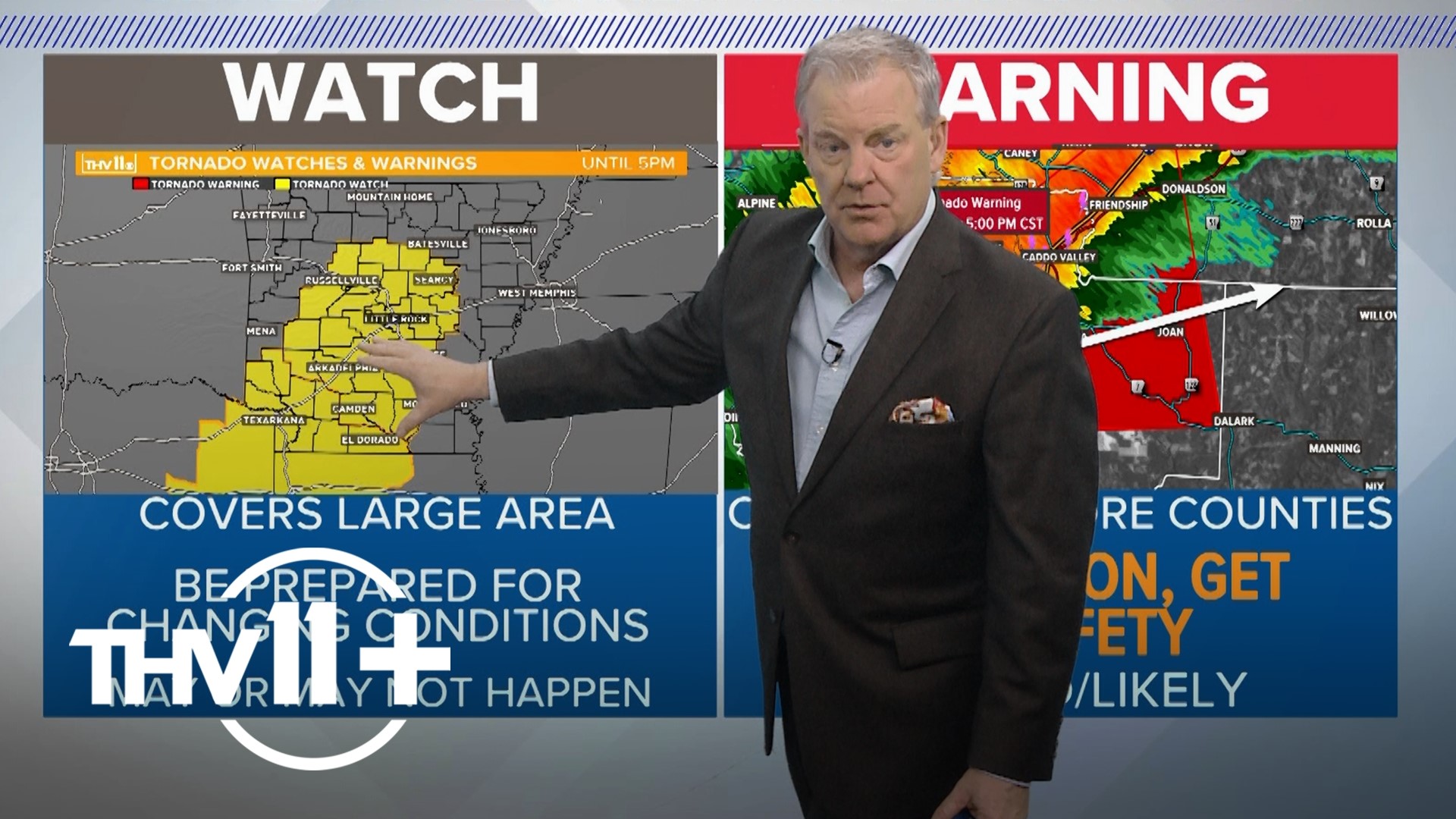LITTLE ROCK, Ark. — As we prepare for the upcoming severe weather season, you will begin to see a bevy of alerts pop up on your phone that say "watch" or "warning" and get confused.
Usually, you will see these alerts in the spring season which is generally considered severe weather season. But you can see them all year round if there is any potentially dangerous weather in your area.
So let's break it down and explain the differences between a watch and a warning so you are ready for any type of severe weather!
What is a watch?
What a watch means is that conditions are likely to produce hazardous weather conditions. That could be anything from severe thunderstorms, flooding, winter weather, or even tornadoes.
Watches generally cover a broad area, often over several counties or states based on the latest forecast.
The best way to think of a watch is that it's a cautionary heads up.
During this time, you should develop a plan depending on the severity of the weather. You should also turn on any weather-related notifications.
What is a warning?
A warning means that dangerous conditions are either happening as you get the alert or are imminent.
That means severe weather, from thunderstorms to a tornado, have been detected on a radar or visually spotted.
These warnings are more specific to smaller regions with defined areas and paths of the storm.
Warning areas have become more detailed as technology has advanced to explain how a storm may impact you. That could include hail, rainfall, damaging winds, and more.
During this time, you should seek cover or shelter until the storm has passed.
Importance of alerts
Whether it's a watch or warning, we stress again the importance of turning any and all severe weather alerts.
While outdoor sirens have been effective, they are only reliable if you are outdoors. And although broadcast television and radio remain a go-to source for weather info, they are susceptible to power outages.
This is where your phone can come in handy so long as you have service. If you want you can download our THV11 app to stay informed or use Wireless Emergency Alerts or texts.
You can also use the NOAA Weather Radio, which is battery-powered and receives continuous info from the nearest National Weather Service location.
➤ Sign up now for THV11's Lunchbox newsletter. It sends you the top trending stories, the latest forecast, and more straight to your email!
➤ Download our THV11+ app for live streaming local news, true crime, and more. You can find it on Roku or Fire TV

